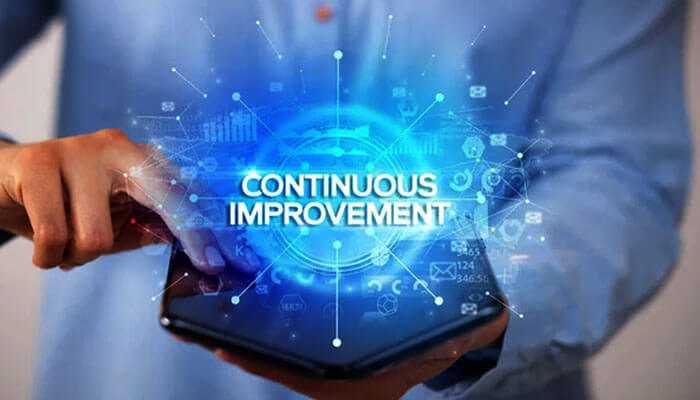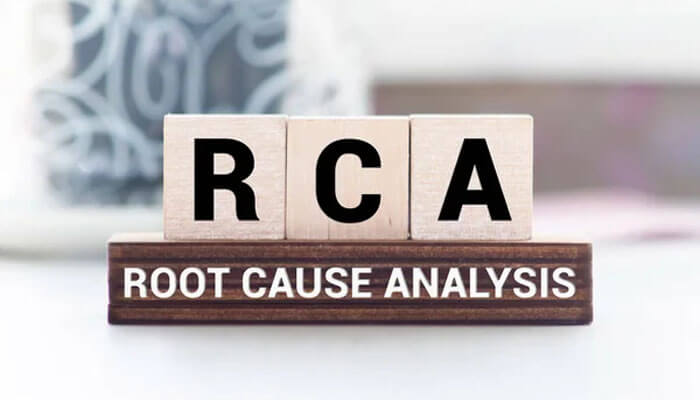Constant improvement plays a role in the success of any business. This entails making adjustments to processes and systems to enhance efficiency, productivity, and overall performance. To accomplish this, businesses utilize a range of tools and strategies. In this article, we will delve into some best continuous improvement tools and techniques that can propel your business to new heights.
Lean Six Sigma
This list of continuous improvement tools and techniques is topped by Lean Six Sigma. It merges two methodologies—Lean and Six Sigma—to eradicate waste and flaws from processes while enhancing quality and customer satisfaction. Lean concentrates on slashing waste, like unnecessary process steps or excessive inventory levels. Conversely, Six Sigma targets defect elimination by employing analysis to pinpoint the root causes of issues.
Kaizen
Kaizen, a term signifying “change for the better,” involves making small improvements rather than waiting for major overhauls. Commonly executed through teams referred to as Kaizen Events, this method encourages employees at all levels to contribute ideas for improvement and ensures ongoing advancement.
5 Whys
The 5 Whys technique pinpoints the root cause of a problem by repeatedly asking “why” until the underlying issue is uncovered. This method encourages companies to tackle the problem rather than just address its symptoms, fostering critical thinking and reducing recurring issues.
PDCA Cycle
The PDCA Cycle, also called the Plan Do Check Act cycle, is a four-step management approach aimed at improving processes and products/services. It involves planning (setting goals and objectives), executing those plans (doing), assessing outcomes against desired targets (checking), and taking actions based on the assessment (acting). This systematic process empowers businesses to enhance and refine their operations continuously.
Value Stream Mapping
Value stream mapping is a visual analysis tool utilized to comprehend and enhance the flow of materials, information, and resources within processes. By creating maps of operations and envisioning more efficient future states, this method helps identify waste, bottlenecks, and activities that do not add value. When businesses visualize the entire value stream, they can efficiently optimize processes rather than just focusing on making isolated improvements.
Kanban
Initially made famous by Toyota for its manufacturing operations, Kanban is now widely adopted in industries to manage workflows efficiently and enhance task management. The core idea of Kanban revolves around using cues like cards or boards to monitor work progress in time. This approach helps maintain a workflow, identify bottlenecks, prioritize tasks, and continuously enhance productivity.
Gemba Walks
Gemba walks involve visiting the workplace—the Gemba—to understand processes firsthand and interact directly with employees. Leaders take these walks to observe operations, listen to employees’ improvement suggestions, address any concerns or issues that arise, and foster a culture of enhancement.
Poka Yoke
Poka Yoke—meaning “mistake proofing” in Japanese—refers to techniques or mechanisms implemented to prevent errors from happening or rectify them promptly if they do occur. It entails designing systems that guide employees towards error work using methods like cues, checklists, error analysis, alarms, or indicators signaling potential mistakes.
Root Cause Analysis
Root cause analysis is a problem-solving method used to identify the reasons behind issues instead of just treating their symptoms. By examining a problem through approaches (such as cause-and-effect diagrams or fishbone diagrams), organizations can pinpoint root causes and implement appropriate corrective measures, preventing similar problems from happening again in the future.
Standard Work
Standard work involves documenting and establishing practices for processes or tasks within an organization. It lays out the effective way to carry out a particular activity based on data and continuous improvement efforts. Through standardizing processes, companies can achieve consistency, minimize variations, and offer clarity for employees when executing their duties. Regularly reviewing and updating work ensures its relevance and alignment with objectives.
Employee Empowerment
Promoting employee empowerment is an element of enhancement. Employees at all levels often hold insights and innovative ideas that can contribute to process enhancement. By nurturing a culture that appreciates employee input, actively engaging them in decision-making processes, and providing opportunities for skill advancement, organizations empower their workforce. This approach not only inspires employees but also fosters an atmosphere conducive to creativity and continuous enhancement.
Conclusion
Continuous improvement serves as the lifeblood of a business. Identifying areas for enhancement is the beginning; putting strategies into action is crucial. With the help of methodologies like Lean Six Sigma, approaches such as Kaizen and Value Stream Mapping, and practices like Gemba walks or Root Cause Analysis, companies can bring about improvements, boost productivity, and maintain an edge.




